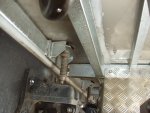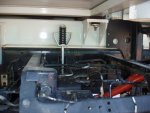Millions of cargo bodies have been hard mounted to chassis over the years, so their can be no denying that this is a valid mounting method. But is this the best mounting method for an expedition camper; I would argue no.
As you have correctly indicated, roughness of the road/track, along with frequency and the weight of the vehicle should all be taken into account.
Fractures of the chassis can occur because of fatigue or if the steel or over stressed. The occasional large pothole, deep wheel rut or washout will definitely stress a chassis with a hard mounted box, but will this cause a frame failure... probably not.
However, continually putting the vehicle in these kinds of situations will arguably increase your risk of encountering issues.
In my opinion, how you mount the camper body to the chassis really comes down to risk management, which is determined by how YOU plan on using the vehicle.




